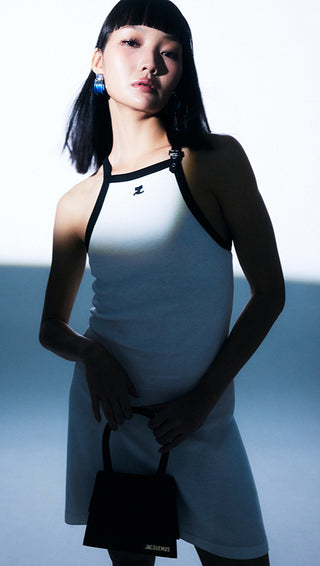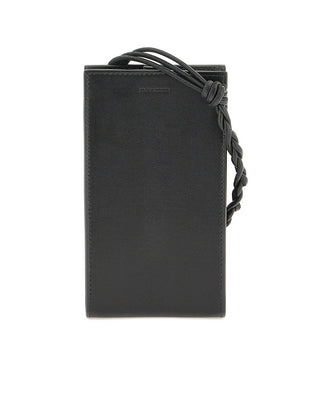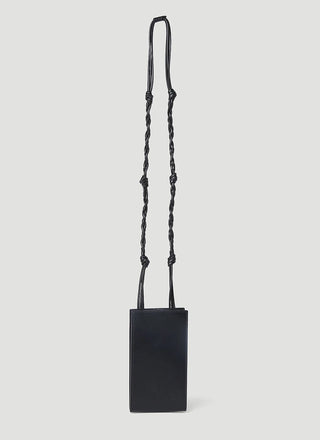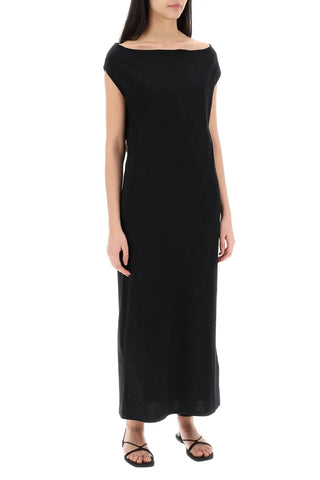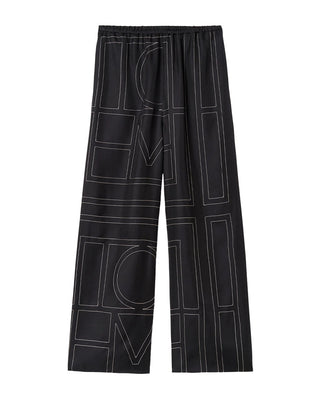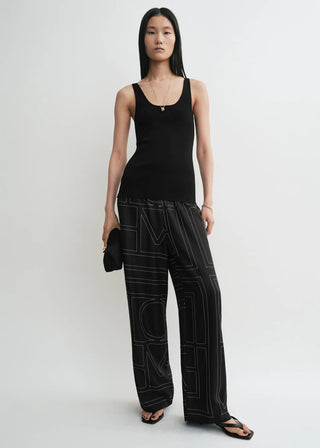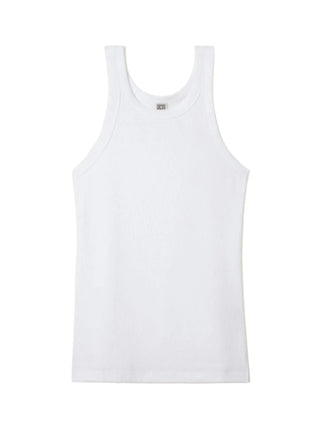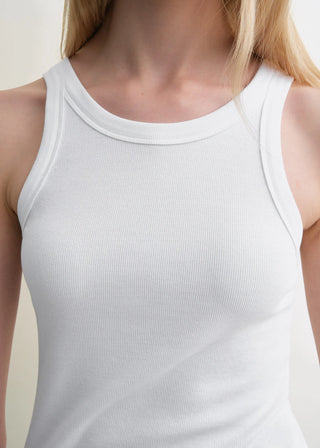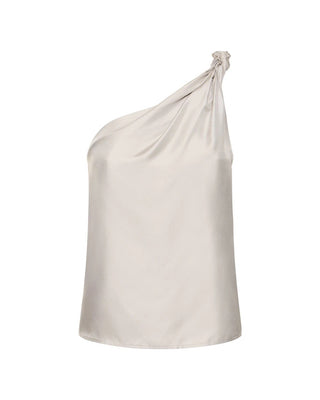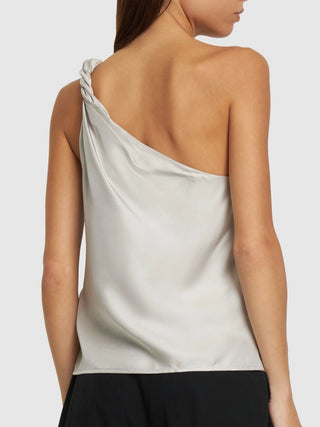
Street Style with Substance: How Su Shan Leong [梁愫珊] Built Her Career from Singapore to the Global Fashion Stage
From Singapore to Paris Fashion Week, Su Shan Leong has turned her lens into a passport. Best known for her unfiltered street style, runway, and behind-the-scenes fashion photography, she’s built a reputation that blends grit, grace, and global perspective. In this Open Talks interview, she shares her path, her process, and what it really takes to stand out in a fast-moving and often exclusive industry, while also reflecting on Southeast Asia’s evolving creative scene. Scroll to read more.
BALCONE: Hi Su Shan. We’ve known you for a while now, but for those just discovering your work, how would you describe yourself in your own words? Could you briefly talk about your background?
SU SHAN: I come from a pretty regular Singaporean family — my parents didn’t have the chance to get university degrees, but they raised my younger sister and me to be first-generation grads. It’s a conventional story on the surface, but with a bit of an unconventional twist, like most families I’d say. As for me, I’m a fashion photographer. Most people probably know me for my street style work, but I also shoot backstage and runway. It’s a form of documentary photography, just with the fashion industry as my playground. I like to think of it as capturing moments where real life meets curated beauty.
B: You’re from Singapore—a small yet forward-thinking city often at the crossroads of tradition and modernity. How has growing up here shaped you personally and creatively?
S: Growing up in Singapore has really shaped who I am; both in my character and in how I approach creativity. Back in my day, the “kiasi” (scared to lose) and “never-say-die” mindset was very much part of how we were raised. So naturally, I grew up believing that if you want something badly enough, you’ll find a way to work hard for it. Perseverance is something deeply ingrained in me, not just for survival, but for chasing dreams. On the creative side, being in such a diverse and multicultural environment has had a huge influence on how I see beauty and style. Things like batik prints, saris, Peranakan kebayas, and cheongsams weren’t something “exotic” to me — they were part of my everyday surroundings. That exposure made me appreciate the richness of culture and craftsmanship from a young age. It definitely shaped how I approach fashion photography today. I’ve always been more interested in documenting the personal stories behind style — whether it’s on the streets, backstage, or on the runway. To me, fashion is never just surface-level aesthetics; it’s culture, identity, and history coming together in a very human way.
B: Who is Su Shan when she’s not working? What does a regular day look like for you in Singapore?
S: Honestly, I’d probably let myself sleep in a bit, maybe till around 10am. Then it’s either brunch at a cosy café with good coffee or a quick fix at the hawker centre — depends on the mood. After that, I’ll most likely just head home and lounge in bed, with a book or watch some David Attenborough or true-crime documentaries - no shame in that. If I’m feeling up for it, I might take my road bike out for a long ride from the west to the east of Singapore. It’s about 50 km through the park connectors, which are honestly such a gem. I picked up cycling during the pandemic and it’s been my go-to way to reset, just me, the greenery and some peace.






B: Your name is synonymous with striking street style photography. What drew you to this side of fashion, and what do you think people often misunderstand about you or your work?
S: What really drew me to street style photography is the thrill of capturing real, unfiltered moments in such a dynamic environment. Being the first and only street style photographer from Singapore also gave me a unique position. It’s a bit of a double-edged sword though, while it helps me stand out, it also comes with misconceptions. A lot of people think this job is easy. Like, you just snap a few fashionable people on the street or spend an hour shooting backstage/runway and you’re done. But in reality, there’s so much more going on behind the scenes. For example, photo turnover is insanely quick — sometimes you’re expected to deliver images on the same day. Imagine spending over 8 hours shooting in the summer heat, going through thousands of images that very night that will take 5 hours, and then doing it all over again for three weeks straight across three different cities for the menswear season. It’s a lot of hard work, physically and mentally. But I love it — there’s something incredibly rewarding about capturing those fleeting moments.
B: You’re based in Singapore but travel constantly for fashion weeks and campaigns. What continues to inspire you here, and what do you find creatively challenging?
S: One thing I really appreciate about Singapore is the sense of safety. When I’m out shooting, I don’t have to worry about my gear getting stolen or robbed, if I leave it on a table for a toilet break. That peace of mind gives me the freedom to focus purely on creating. In contrast when I’m in Europe — especially in cities like Paris — I have to be constantly on guard. That added layer of caution can be mentally exhausting and definitely affects my flow when I’m working. On the flip side, the challenging part of being based in Singapore is the lack of accessibility within the fashion industry here. Getting connected to PR agencies or being invited to fashion events isn’t as straightforward. It’s a much more exclusive scene compared to overseas, where events are generally more open and there are more opportunities to network and collaborate. I feel like you really need to be part of the "in" crowd to even hear about these events. Over there, the industry feels more welcoming and dynamic, which naturally feeds creativity. In Singapore, you have to work twice as hard to find those connections.
B: From your point of view, how has Singapore’s fashion or creative scene evolved in the last few years?
S: To be honest, I haven't been very active in Singapore's fashion or creative scene, so it’s hard for me to speak from personal experience. Most of my work tends to happen overseas as I don't get many job opportunities here. That said, from what I observe, the scene does seem to be growing but I think it still has room to grow in terms of international reach and opportunities.
B: You’ve worked with a wide spectrum of names—from WWD, Mr Porter, Moda Operandi and Vogue. How do you adapt your visual voice across such different collaborations?
S: When working with online retail platforms, I always start by understanding their audience—who they’re speaking to, their demographic, and how I can tailor my visuals to resonate with that. I’ll go through their brand offerings and take cues from their social media presence to align with their aesthetic. If they provide a detailed brief, that’s even better for ensuring we’re on the same page. For editorial publications, it’s a bit different. They usually approach me for a specific visual style they already appreciate in my work, so I focus on elevating that. I make it a point to keep the images editorial, while also playing with the environment and subjects to bring something fresh to each shoot. For brand collaborations, it often depends on how much creative direction they provide, but typically there’s a brief, which makes the process more straightforward.


GHALI DURING PMFW AFTER JACQUEMUS FASHION SHOW SS26 SHOT BY SU SHAN LEONG


KOZUE AKIMOTO DURING PARIS MENS FASHION WEEK SS26 BY SU SHAN LEONG


LYAS DURING PARIS MENS FASHION WEEK SS26 AFTER JACQUMUES FASHION SHOW SHOT BY SU SHAN LEONG
B: You’re surrounded by creatives, you attend fashion weeks, and you work with celebrities—an industry that often looks glamorous from the outside. Is it really as polished as it seems? Are there parts of the industry that feel more challenging or less talked about?
S: I wouldn’t say I’m an expert when it comes to working with celebrities, at least not in a one-on-one, proper shoot setting. Most of my encounters happen quickly on the streets, fleeting moments that last less than a minute. So, while the industry often appears glamorous from the outside, the reality is the opposite. It’s not an environment for the faint-hearted. You really have to grind your way through and carve out your own path. Yes, it can be pretentious at times, but staying grounded—whether through friends outside the fashion bubble to stay grounded — makes all the difference. Therefore for me, coming back to Singapore after every trip is a way for me to get away from it all. There are definitely aspects of the industry that people don’t talk about enough. For instance, rates as a photographer are rarely discussed openly. Without transparency, it becomes a lot of trial and error to figure out how to charge fairly, unless you’re lucky to have generous peers who are willing to share that knowledge. Networking can also be a huge challenge. In the beginning, I didn’t really know how to 'get in,' so I found my own ways, browsing magazine bylines, cold-emailing, or photographing stylists and tagging them on social media hoping for a reply. It might sound desperate, but with how competitive the industry is, you have to be proactive. And truthfully, there’s a side of the industry where people will step on others to get ahead, but that rarely gets talked about.
B: You’re one of the few women fashion photographers working at this level in Singapore. Do you feel the industry treats female photographers differently, here or globally? Do you feel supported?
S: Photography has always been a male-dominated field, and I’m very aware of that. Whether it’s Singapore, Europe, or even globally, the majority of photographers at the top are still men. There are only a handful of women consistently shooting fashion. That said, I’ve noticed certain places are more progressive. For example, I love Sydney, Australia, many of the leading photographers there are women, and they’re doing incredibly well. It’s refreshing to see a creative scene where women are not just present but thriving. However in Singapore, the community is still very small when it comes to female fashion photographers. Some have moved abroad to places like New York or Europe, where there are broader opportunities and more appreciation for fashion-focused work. Others have pivoted to areas that are more in demand locally, such as weddings, concerts, travel, portraits, or news photography, which tend to be more sustainable here. As for support, I think it really depends. The industry itself doesn’t necessarily make it easier for women, but I’ve been lucky to find a network who are supportive. Still, there are definitely unspoken challenges. You often have to work twice as hard to be taken seriously, especially when it comes to being seen as a ‘serious’ photographer and not just someone who’s there for the aesthetic. I believe things are slowly changing, but there’s still a long way to go in terms of equal visibility and opportunities. That’s why it’s important to carve out your own space, stay consistent, and support others in the community. Representation matters. The more we show up and create work that speaks for itself, the more we can shift those outdated perceptions.
B: For those unfamiliar with Southeast Asia, how would you describe the creative scene here? Which country or city in the region do you think is poised to become the next breakout hub—like Korea did with beauty and fashion?
S: With over 650 million people, Southeast Asia's diverse population fuels creativity, drawing from a rich mix of ethnicities, languages, and cultures. Positioned at the crossroads of East and West, it’s a hub for creative exchange, influencing global trends while preserving its unique cultural identity. The creative scene is a dynamic mix of traditional heritage and contemporary innovation. Artists and designers challenge societal norms, offering fresh perspectives that balance commercial appeal with artistic depth. Collaboration and community are key, driven by a collective mindset that fosters cross-disciplinary projects. The region is constantly evolving, blending local traditions with global trends. Vietnam is definitely poised to become the next breakout hub in the region. The country has a young, ambitious population that’s eager to succeed and willing to put in the hard work to get there. With that comes a fresh wave of creative talent, especially in fashion. Brands like Subtle Nguyen, Plop Apparels, Phuong My are great examples of how exciting and dynamic the scene is becoming. Vietnamese people are stunning, their facial features are so striking and unique, which makes them great models in the fashion world. And if you’ve ever been to Vietnam, you’d know how incredible their landscapes are. From lush mountains to long meandering rivers, the country offers breathtaking locations that are perfect for editorial shoots. Honestly, I could go on and on about how amazing Vietnam is, both creatively and culturally. It’s definitely a place to watch. Overall, Southeast Asia has a rich and diverse creative scene, but Vietnam feels like it’s on the cusp of something big, similar to how Korea became a global powerhouse in beauty and fashion.


JENNY ORTEGA AT DIOR FASHION SHOW SHOT BY SU SHAN LEONG


JONATHAN ANDERSON AFTER LOEWE FASHION SHOW SHOT BY SU SHAN LEONG


AFTER CHANEL SHOW SS25 SHOT BY SU SHAN LEONG
B: When a new project lands in your inbox, what makes you say yes?
S: It really depends. Sometimes it’s a dream client or a subject I’ve always wanted to work with. Other times, it could be the opportunity to shoot in a destination I’m excited about—like being invited to cover a fashion week somewhere new. I also think about the bigger picture: will this project open doors to similar opportunities or help me grow in a direction I want? There are many factors, but ultimately, it’s a mix of passion and potential.
B: You attend almost all the major fashion weeks. Is there one you particularly look forward to? And what does a typical day during fashion week look like for you?
S: I’d actually pick Australia Fashion Week in Sydney. The atmosphere there is just different, much more approachable, especially if you’re starting out. Aussies are such a friendly, welcoming crowd, and I’ve always felt really accepted there. Since it happens in fall, the weather is lovely. What really stands out are the beautiful off-site show locations, you get the beaches, the iconic Sydney Opera House, and Carriageworks, all offering stunning backdrops. The overall style leans towards commercial with a resort-inspired twist, which makes it very wearable and fresh. Another thing I love is that most of the street style photographers there are women. There’s a real sense of respect among photographers, no need to fight for shots—it’s a much more supportive environment. I really miss Sydney!
B: Fashion is often dismissed as superficial by those outside the industry. As a creative and fashion photographer, how do you experience its depth? Do you think there are still common misconceptions about the role fashion plays in culture and creativity?
S: Fashion often gets dismissed as superficial, but it’s so much more than just clothes. It reflects culture, identity, and even political and social issues. As a photographer, I see how much storytelling happens through fashion, whether it’s a designer’s concept, personal style, or the emotion captured in an image. One of the biggest misconceptions is that fashion is only about trends or looking good. In reality, there are so many layers; it blends art, history, and craftsmanship. For creatives like me, it’s a way to document how people express themselves and how culture evolves. Yes, it looks glamorous from the outside, but there’s real depth, creativity, and hard work behind every image and every collection.
B: Is there a dream project—whether with a brand, a person, or even a location—you still want to do?
S: Lemaire, Cecilie Bahnsen, Thom Browne—any project with them would be a dream. As for people, I’d really like to collaborate properly with Enzo Vogrincic, especially since I happened to take that viral photo of him at Loewe. He’s such a genuinely kind person. I’m also very interested in working with Taiwanese actors and singers like Jason Tauh, Chen Hao Sen, Vash Hsu, Polin Tung, A-Lin. Beyond fashion, one of my dreams is to step into being a producer for music videos. On the location side, I’d love to shoot in stunning places like Kazakhstan, Northern Vietnam, and South Island in New Zealand. The landscapes there would make for incredible visuals.
B: How would you describe your relationship with the fashion industry? What excites you, and what do you think needs to shift?
S: Seeing a new collection for the first time still gives me a thrill. I see fashion as more than just clothing; it's an artistic expression of culture, identity, and creativity. Concepts like 'see now, buy now' tap into the excitement of immediacy, but they also reflect how fast-paced the industry has become. What I truly treasure, though, are the genuine friendships I've built along the way. In an industry that's often seen as pretentious or competitive, finding real people is rare—and those connections mean the most to me. I’m also aware of the industry's challenges. There's a need for more transparency around things like fair pay for photographers, the environmental impact of overproduction, and creating spaces that are more inclusive, not just in front of the camera, but behind it too. I’d love to see more support for emerging creatives and a shift towards mindful consumption. Fashion has so much power to influence, so it should lead by example
B: You shoot both menswear and womenswear. Does your approach shift when capturing each, or do you see them as part of the same visual language?
S: Yes, the way I shoot menswear and womenswear is definitely different. With menswear, I tend to focus more on structure, tailoring, and subtle details, there’s often a quiet confidence in the way men carry themselves, so I like to highlight that through clean, composed frames and a more grounded energy. It’s less about drama and more about them, their attitude, posture, and the way clothes move with the body. For womenswear, I allow myself to be more playful and fluid. There’s usually more room to experiment with movement and storytelling. I pay attention to the flow of fabrics, the emotion in a glance, and how to capture the strength and softness in one frame. It’s about balancing beauty and character. At the same time, both are part of my overall visual language. I approach every shoot with the goal of elevating the subject, using the surroundings creatively, and staying true to my style.
B: What’s in Su Shan’s bag? What are the top three things you never leave the house without?
S: During fashion week, I always carry some Singaporean snacks, a small 300ml thermal bottle for water, and my AirPods. On a regular day, my must-haves are the Cezanne Watery Lip Tint in shade 05, my AirPods, and of course, my wallet.
B: What are your top three songs on repeat right now?
S: Giveon - Lost Me
Ella Mai - Little Things
方大同 Khalil Fong - 特別的人 (Special Person)
B: What’s something you can’t go without in your everyday life, whether it’s a habit, an object, or a strange little ritual?
S: Music is something I absolutely can’t live without. I always have my AirPods with me no matter where I go. My playlist is a real mix, everything from 80s ballads to current R&B, a bit of country to C-Pop. When I’m editing photos, I often play instrumental piano covers of pop songs. They work like white noise for me, familiar melodies without the distraction of lyrics. Though, ironically, I still end up singing along anyway!
B: How do you define luxury today, and has that meaning changed for you over time?
S: Luxury is still something I can’t really afford, at least not in the traditional sense of high-end brands and price tags. But over time, I’ve realised luxury isn’t always about material things. For me, it’s become more about time and freedom. Being able to choose the projects I want to work on, having the time to create personal work, go on dates with friends, or even just enjoying a slow morning or travelling with family, that feels like real luxury now.
B: What advice would you offer to younger creatives looking to pursue fashion photography or build a career in the industry today? In your experience, what’s the one thing that really makes a difference?
S: Stay genuine—people can easily tell when you're fake. Everyone moves at their own pace, so focus on your journey, put in the hard work, and keep going. Persistence is key
B: What keeps you creatively curious right now? Was there a moment from your career that made you pause and say: “Wow, I really did this”?
S: I love reading fiction because it keeps my imagination alive, I’m a dreamer, and books let me visualise scenes in my head, almost like directing my own film. A proud career moment for me was landing the Vogue job in 2022 to shoot Australia Fashion Week. That was a real ‘I did it’ moment—being able to say I’ve shot street style for American Vogue in three cities is something I’m proud of. Another surreal milestone that happened this year was shooting the cover for Dior in Kyoto for WWD. Definitely a pinch-me moment.


EDWARD L BUCHANAN DURING MILAN MEN'S FASHION WEEK SS26 SHOT BY SU SHAN LEONG


EMMA ROBERTS DURING PARIS MENS FASHION WEEK SS26 AFTER JACQUEMUS FASHION SHOW SHOT BY SU SHAN LEONG


ENZO AFTER LOEWE FASHION SHOW FW24 SHOT BY SU SHAN LEONG
B: Which brands or pieces at Balcone have caught your eye recently, and what draws you to them?
S: Jil Sander, Toteme, and LouLou Studio are brands I’m already familiar with and they’re easy to integrate with my everyday wardrobe. Their pieces blend seamlessly with what I already own.
B: While you regularly shoot and collaborate with brands, do emerging designers still catch your eye? What role do you think they play in shaping the future of fashion?
S: Absolutely, emerging designers still catch my eye, especially at fashion weeks like those in Shanghai where fresh brands are always making their mark. I love seeing how designers infuse their cultural influences into their collections and bring a raw perspective before they’re fully polished in the industry. Emerging designers play a crucial role in shaping the future of fashion by pushing boundaries and introducing new ideas that often reflect their generation and the changing world around us. Personally, I’ve built a diverse audience on Instagram that appreciates this side of fashion, and I’m happy to use my platform to help these emerging brands get the exposure they deserve through my street style and backstage/runway coverage.
B: At Balcone, we focus on emerging designers and alternative voices in fashion, those shaping new narratives outside the mainstream. In your view, how essential is this space, and do you see platforms like ours playing an increasingly important role in shifting the industry forward?
S: Platforms like Balcone are vital for fashion today. Emerging designers and alternative voices challenge the norm and bring fresh perspectives, sparking real innovation. They help shape new narratives that often get overlooked by mainstream fashion, and by supporting them, we’re pushing the industry toward a more inclusive and diverse future. Giving these designers a platform to be seen and heard is essential for creating that shift.


